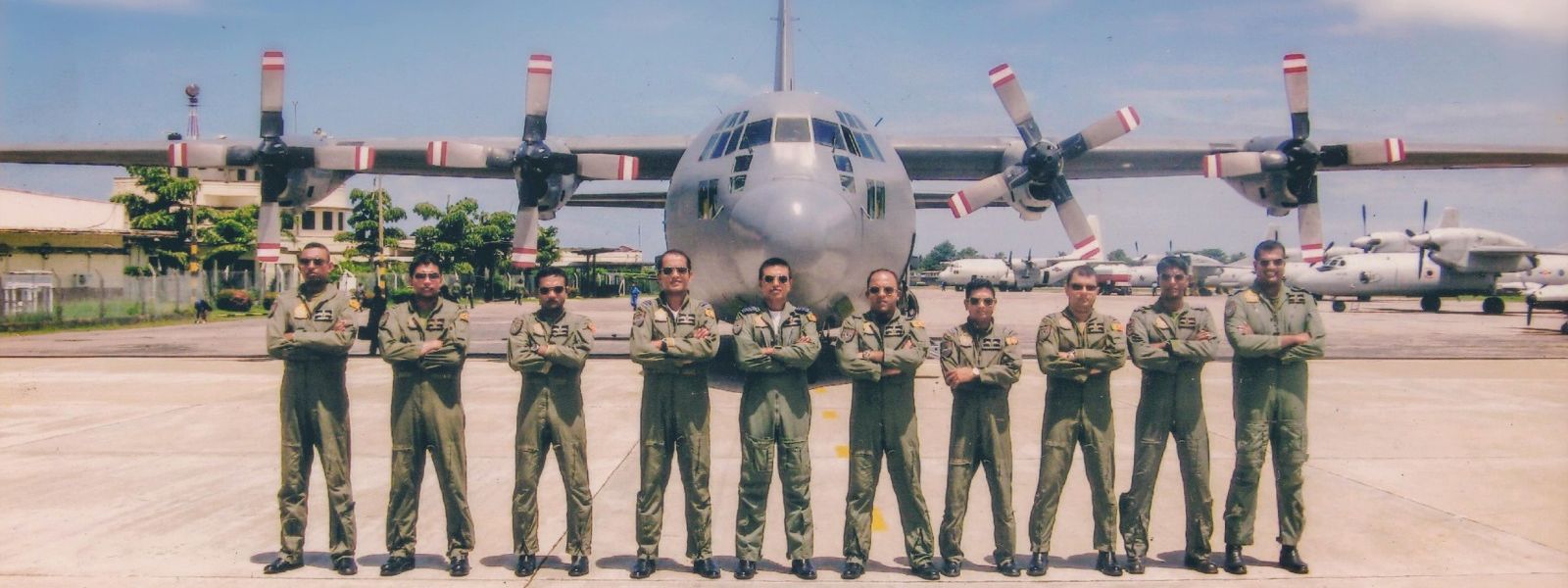.webp)

No. 2 Heavy Transport Squadron celebrates 66th anniversary
"Heavy Lifters", No. 2 Heavy Transport Squadron, has stepped into its 66th year of proud service to the motherland today (01 September 2023). With the inception of the Royal Ceylon Air Force, it had only a few aircraft housed in the No. 1 Squadron. Later, with the development of the Royal Ceylon Air Force in its capacity during the reign of Air Vice Marshal JL Barker, a requirement arose for having a separate Training Squadron and an Operational Squadron. As a result, on 01 September 1957, the No. 1 Squadron was split into two, setting up the No. 2 Squadron. Initially, the No. 2 squadron was comprised of Oxford Airspeed, Prestwick Pioneer, De-Havilland Dove aircraft and also the S-51 Dragonfly helicopter, which was the first helicopter of the Royal Ceylon Air Force. Initially, the squadron was located at SLAF Base Katunayake carrying out Transport and Patrol duties.
In September 1959, two (02) De Havilland Herons were purchased directly from England and ferried to the squadron to enhance its operational capability. These were ferried all the way from south London by a local aircrew. The arrival of Herons opened the door to the Royal Ceylon Air Force’s global operations, which extended as far as Indonesia to the east and Cairo to the west. These international flights provided enough experience to the pilots as well as navigators of the fast-developing Royal Ceylon Air Force. In 1973, the squadron received the Convair 440 aircraft into service from Eastern Airlines, USA, to boost operations of HELITOURS between Ceylon and the Maldives. In 1975, the DC 3 Dacotas came into operation, and towards the end of the 1979s, an HS 748 Avro was absorbed into the No. 2 Squadron fleet. From the period of 1983 to 1985, the squadron acquired three Siai Marchetti SF 260TPs, one (01) Avro and one (01) Beech King aircraft. With the inception of the SF 260 TPs, the squadron was capable of carrying out a combat role in support of Eelam War I.
In 1985, with the expansion of Katunayake International Airport, No. 2 Squadron was shifted to Ratmalana. In 1986, another HS 748 (Avro), five (05) SF 260 TPs and two (02) Y-12 aircraft were added to the squadron inventory. With new aircraft, the squadron expanded its role to Commercial Flights and Aerial Survey missions other than transporting troops, VIPs and cargo. In the late 1980s, DC 3, Doves and Herons were ceased from operation. On 15 September 1992, a significant bit of restructuring of the No. 2 Transport Wing took place, dividing it into No. 201 Heavy Transport Squadron and No. 202 Light Transport Squadron. The No. 201 Squadron operated HS 748 Avro, Y-8 and Cessna 421 aircraft and the No. 202 Squadron operated Y-12 and Beech King Aircraft and both squadrons were under the command of the No. 2 Transport Wing. All technical data for the No. 201 Squadron was computerized in 1992. As a commercial venture, the SLAF Wet-leased two of its Avro aircraft to Air Lanka for a period of two months, from January to March 1992. On 08 November 1995 the No. 201 Squadron was re-designated as the No. 2 Heavy Transport Squadron and the No. 202 Squadron as the No. 8 Light Transport Squadron, which operated under separate commands. Three Antonov 32B aircraft joined the fleet of No. 2 Squadron in the same year. But this period became the darkest period of the No. 2 Squadron's history, during which two HS 748 aircraft, two AN 32 aircraft and a Y-8 aircraft were shot down by the enemy during operational flights carried out to SLAF Palaly. In 1996, four (04) AN 32 aircraft were acquired by the squadron to cater to the increased demand for transport in support of the ongoing operations and also to replace the two (02) AN 32s lost in 1995. To extensively increase the lift capability, the squadron took delivery of two (02) C-130 Hercules aircraft in late 2000. Other three (03) AN 32s were also added to the fleet in the same year.
The present Commander of the Sri Lanka Air Force, Air Marshal RAUP Rajapaksa, served as a Commanding Officer during the period of 01 January 2010 to 28 March 2011 and was a pillar of knowledge and strength to many pilots of the Air Force. The first Commanding Officer of the wing was Flight Lieutenant PH Mendis and presently Wing Commander HMM Samarakoon commands the No. 2 Squadron as the acting Commanding Officer.
As the No. 2 Squadron spans its commitment over 66 years of distinguished service in the Combat Support Operations in the role of air transportation in the SLAF, the contributions that has made to the country in terms of military and civil requirement are colossal and intangible notably, the assistance provided throughout the humanitarian operations and establishing air diplomacy in the events of regional disasters. At present, the No. 2 Squadron shelters classic Lockheed C-130 Hercules and AN-32B aircraft together with a dynamic and professional team of aircrew and engineers who are tirelessly working hard to keep the flag flying throughout. In many of the past years, it has been considerably accepted that the largest percentage of flying has been carried out by the No. 2 Squadron and the commitment of the squadron was above 50% of the total air operation hours done by the Air Force from 1996 to 2005. During this period, many pilots of the squadron made their supreme sacrifice in the face of the enemy. However, the squadron continued to discharge the responsibility in the challenging environment, willingly accepting with its remaining pilots and kept the lifeline intact in the northern peninsular. Although the designated role of the squadron may sound limited in its area of responsibility, throughout its life span, No. 2 Squadron has flown into many divested fields of air operations to keep with the slogan of the SLAF.
Other Articles
Featured News





.png )




MARINE-781400_550x300.jpg)



-781110_550x300.jpg)

-779769_550x300.jpg)
-779763_550x300.jpg)
-779757_550x300.jpg)








.webp)






